Intro

As a new parent, there are countless new experiences and challenges that come with caring for your precious little one.
One common concern that many parents may encounter is cradle cap.
If you find yourself asking, “What is cradle cap?
” then this comprehensive guide is here to help you navigate this common but often misunderstood condition.
Unveiling the Mystery: What Exactly Is Cradle Cap?
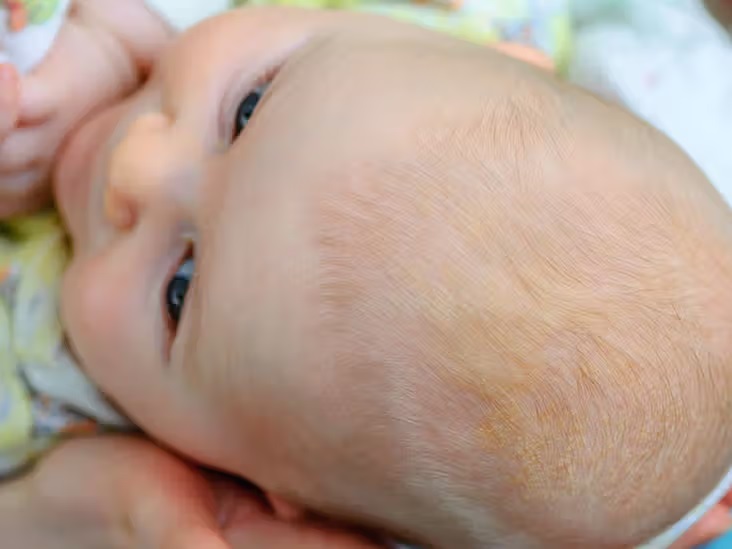
Cradle cap may sound like an old-fashioned term, but it refers to a condition that’s quite common among newborns and young infants.
Essentially, cradle cap is infantile seborrheic dermatitis, manifesting as patchy, scaly, and sometimes greasy spots on a baby’s scalp.
It can sometimes extend beyond the scalp to the baby’s face, ears, and even some areas of the body.
Although it might seem alarming at first glance with its yellowish or brownish scales, it’s important to understand that cradle cap is not a painful condition for your baby, nor does it result from any lack of care or hygiene.
The appearance of cradle cap can vary from mild, with slight flaky patches, to more severe cases where the scales are thicker and more widespread.
It’s notable for being non-itchy, which helps differentiate it from other skin conditions that may affect infants.
Importantly, while the sight of cradle cap can be concerning for any parent, it’s reassuring to know that this condition is typically temporary, often clearing up on its own as the baby grows.
Understanding what cradle cap involves is the first step in addressing any worries you might have.
Knowing that it’s a common, non-contagious, and generally harmless condition can provide some relief.
While its exact causes are still being studied, the good news is that there are gentle ways to care for your baby’s scalp that can help ease the condition and keep your little one comfortable.
Cradle Cap Causes: Why Does It Happen?
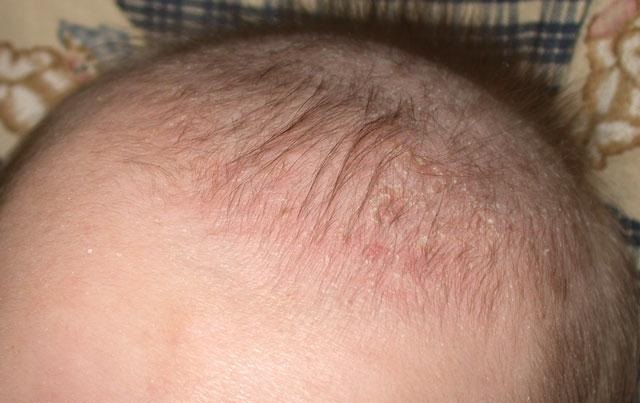
The root of cradle cap might seem like a mystery shrouded in baby lore, but rest assured, it’s grounded in science, though not entirely understood.
Imagine your baby’s scalp as a bustling city where the oil-producing glands are working overtime.
This excess oil production is believed to be the main culprit behind the formation of those crusty, scaly patches known as cradle cap.
Why do these glands work in overdrive?
Theories suggest a combination of factors could be at play.
Hormones passed from mother to baby during the final stages of pregnancy might supercharge these glands, much like a caffeine rush.
Genetics might also whisper through the family tree, predisposing some babies to this condition more than others.
Additionally, a type of yeast that lives on the skin, minding its own business, could overgrow in this oil-rich environment, adding to the scaly buildup.
Understanding these potential causes doesn’t just satisfy curiosity—it offers a beacon of reassurance.
Cradle cap, with its mysterious origins, isn’t a reflection of your caregiving or something you’ve done.
It’s a common part of many babies’ early chapters, as natural as their first smile or giggle.
While the exact triggers may remain partially in the shadows, the light shines through in knowing that this condition is both temporary and manageable, a comforting thought as you navigate the new waters of parenthood.
Identifying Cradle Cap: Signs and Symptoms

Recognizing the signs of cradle cap can be straightforward, thanks to its distinctive appearance.
Look for the telltale patches of greasy, yellow or white scales that typically adorn your baby’s scalp.
These can vary in severity from barely noticeable to more pronounced patches that capture attention.
Though cradle cap primarily makes its debut on the scalp, don’t be surprised if you notice similar scales on other parts of your baby’s body, such as the eyebrows, behind the ears, or even the diaper area.
Redness or slight inflammation might accompany these scales, hinting at the condition’s presence.
While cradle cap is chiefly a visual concern without serious health implications, some babies might experience a bit of itching.
Remember, encountering these signs is a common part of many babies’ developmental journey and doesn’t indicate anything amiss with your baby’s hygiene or your care.
Keep an eye out for these symptoms to understand and address cradle cap confidently, armed with the knowledge that this condition is both non-contagious and manageable.
Simple and Safe Treatment Options
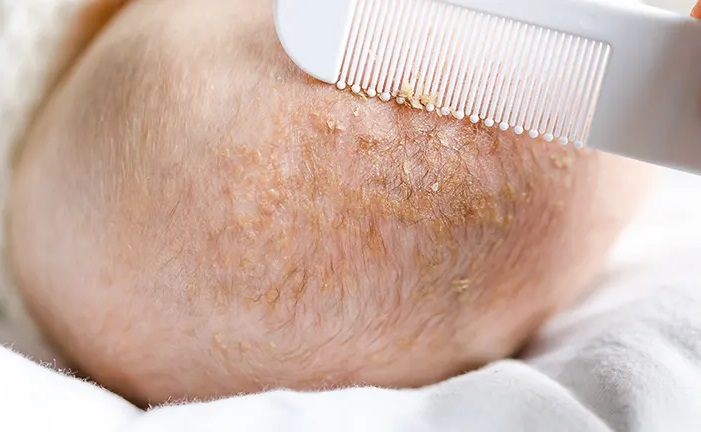
Addressing cradle cap doesn’t have to be a source of stress.
Many parents find relief in adopting straightforward, gentle approaches that cater to their baby’s delicate skin.
A good starting point involves the regular use of a mild baby shampoo.
Gently massaging the shampoo into your baby’s scalp during bath time can work wonders, helping to loosen those pesky scales without irritation.
Following up with a soft-bristled brush to carefully comb through your baby’s hair can further assist in removing the scales, all while being a soothing touch for your little one.
For some babies, an occasional application of natural oils, such as coconut or olive oil, can be beneficial.
Applying a small amount of oil to the scalp, letting it sit for a few minutes to soften the scales, and then gently combing or brushing the hair can make a significant difference.
It’s crucial, however, to wash any residual oil off to prevent further buildup.
If these gentle methods don’t quite do the trick, consulting your pediatrician is the next step.
They may suggest a medicated shampoo or lotion specifically designed for treating cradle cap.
These products are typically formulated to be safe for infants, tackling the issue without harsh chemicals or unnecessary irritation.
Embracing these simple and safe treatment options can help manage cradle cap effectively, ensuring your baby’s comfort and your peace of mind.
When to Seek Professional Advice
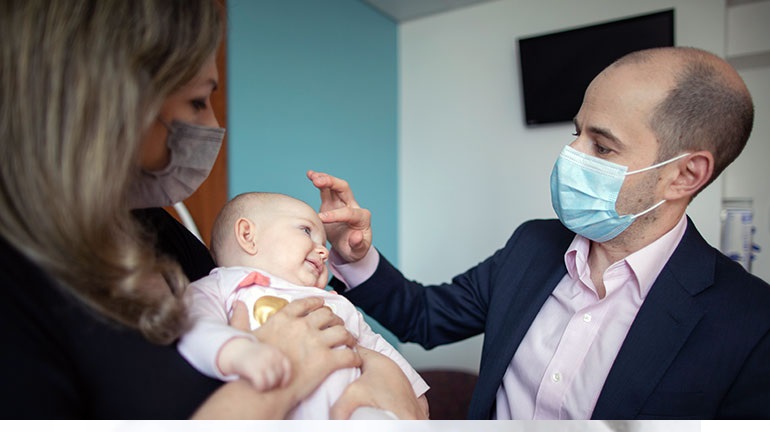
Navigating the journey of parenthood often means knowing when it’s time to call in reinforcements, especially when it comes to your baby’s health.
While cradle cap is typically a benign and self-resolving condition, there are circumstances where a visit to the pediatrician becomes a prudent step.
If you notice that the cradle cap appears unusually severe, covers a large area, or seems to be causing your baby discomfort, these could be signs that professional input is needed.
Similarly, if the condition persists despite your best efforts with gentle home treatments, or if you’re worried about infections or other skin conditions, reaching out to your healthcare provider is a wise move.
They are equipped to offer tailored advice, possibly recommend specialized treatments, and ensure that your baby’s health is on the right track.
Remember, seeking help is not a sign of failure but rather an act of care and vigilance.
Your pediatrician is a valuable ally in your baby’s wellbeing journey.
Preventive Measures and Long-Term Care

While there’s no foolproof strategy to prevent cradle cap, adopting certain practices can help manage its severity and encourage a healthier scalp for your baby.
Initiating a routine that includes washing your little one’s scalp with a gentle baby shampoo can contribute significantly to skin health.
This routine doesn’t need to be daily but finding a balance that works for your baby’s skin is key.
Gently massaging their scalp during baths can not only be a bonding experience but also aids in preventing scale buildup.
Integrating the use of a soft brush to lightly comb your baby’s hair post-bath helps in evenly distributing natural oils while removing loose flakes.
This method supports healthy skin turnover without being abrasive.
Hydration plays a crucial role as well; ensuring your baby is well-hydrated supports overall health, including the skin’s ability to repair and renew itself.
As your baby transitions into different stages of growth, continue to observe their skin’s response to products and environmental factors.
Adapt your approach as needed, always opting for the mildest solutions that deliver comfort and care.
These steps, while seemingly simple, pave the way for fostering a healthy skin environment, mitigating the severity of cradle cap episodes, and promoting long-term skin wellness.
Understanding and Empathy: You’re Doing Great!
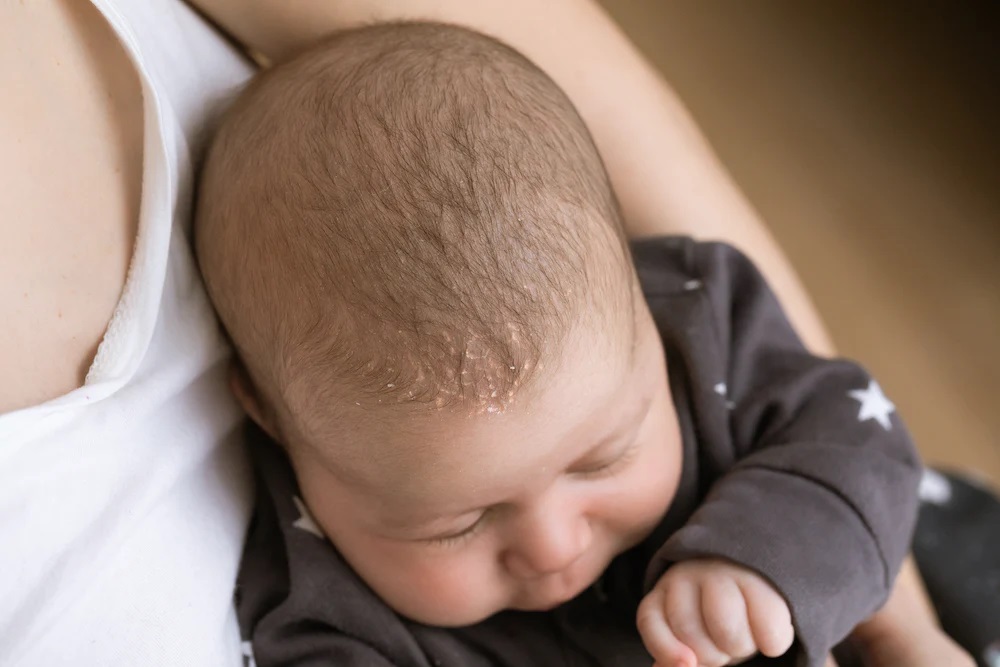
Embarking on the journey of parenthood is a monumental chapter filled with its unique set of joys and challenges.
Encountering cradle cap can be one of those moments that test your resolve, but it’s also a testament to your commitment to navigating the complexities of caring for a newborn.
Remember, encountering this condition is a normal part of many infants’ development and not a reflection of your parenting.
It’s okay to feel concerned or seek clarity on the best ways to care for your little one’s skin; these actions underscore your deep love and responsibility as a parent.
As you gently address cradle cap with the recommended care, know that your efforts are making a difference.
Each small step, from the tender washing of your baby’s scalp to the light, loving brush strokes, contributes to their comfort and wellbeing.
If the path seems uncertain, or you find yourself needing reassurance, remember that your pediatrician is there to guide you with professional advice tailored to your baby’s needs.
You’re navigating this journey with great care and attentiveness, which is truly commendable.
Keep going with confidence; your love and dedication are the pillars supporting your baby’s healthy growth and happiness.
